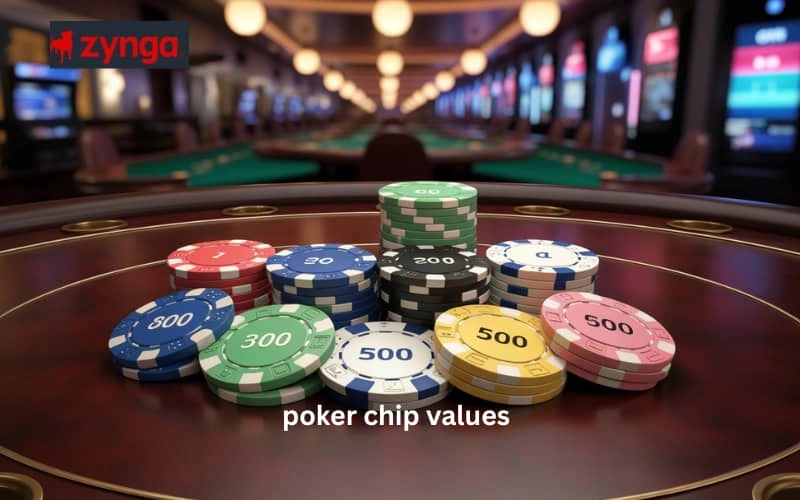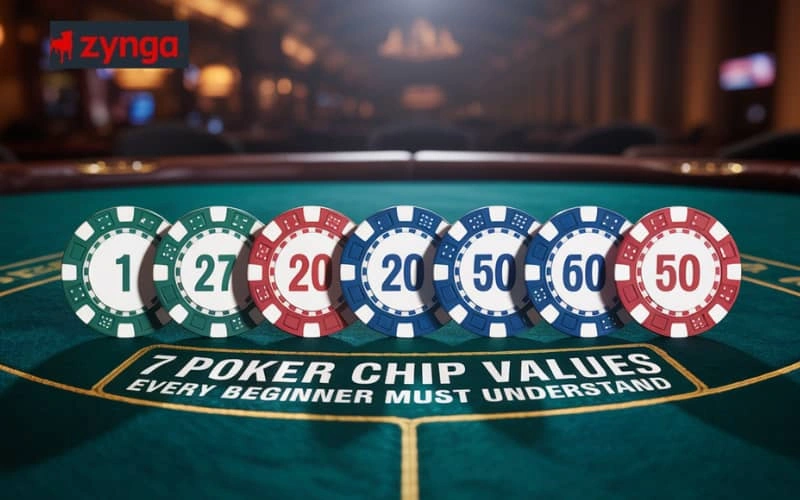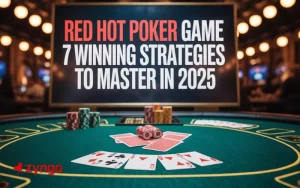Understanding poker chip values is essential for anyone who wants to start playing poker. Whether you are playing at home with friends or in a casino, poker chips are the standard currency of the poker game. Knowing the value of each chip helps you keep track of your bets, manage your bankroll, and play responsibly. In this article, we will explain the seven most common poker chip values every beginner must understand.
The Basics of Poker Chip Values
Poker chips come in different colors, and each color usually represents a specific value. While there is no universal standard, there are commonly accepted values for most home games and professional poker settings. The colors and their corresponding values help players quickly recognize and manage their stacks. Beginners must learn these associations early on to avoid confusion during games.
White Chip – Usually the Lowest Value
The white poker chip is typically the lowest denomination in most sets. It usually represents a value of 1 unit. In a home game setting, this could mean 1 cent, 1 dollar, or 1 point, depending on the stakes agreed upon. Because of its low value, the white chip is used for small blinds or minimal bets. Understanding the value of the white chip is crucial because it often forms the base for other chip denominations.
Red Chip – A Step Higher in the Set
Red poker chips are commonly valued at 5 units. These chips are often used for small raises or to complete the big blind. In many poker sets, the red chip is the workhorse of betting, used frequently throughout the game. When calculating pot size or counting your own stack, you will likely handle many red chips. This makes knowing their value important to avoid over- or under-betting.
Blue Chip – Usually Worth 10 Units
In most sets, blue poker chips have a value of 10 units. While not always included in standard sets, they are commonly used in mid-stakes games or for clearer value separation in custom chip sets. Players should understand that blue chips can replace two red chips, making them helpful for consolidating chip stacks. As games progress, the use of blue chips becomes more frequent during larger bets.
Green Chip – Mid-Level Value
Green poker chips generally represent 25 units. These are used in more serious poker settings or during the later stages of tournaments where the blinds are higher. Green chips start appearing once the smaller denominations have been removed or become less practical. When green chips are in play, beginners need to be careful with their betting, as each chip now represents a more significant portion of their stack.
Black Chip – High-Value Chips
Black poker chips are valued at 100 units and are considered high-value chips. These chips are often used for large bets, rebuys, or in high-stakes cash games. They become more common in tournament play as poker chip values the blinds increase. Handling black chips requires more focus, especially for beginners, since losing just a few can make a big impact on your position in the game. Recognizing the value of black chips helps players better manage their stack and avoid unnecessary risks.

Purple Chip – Very High Denomination
In some poker chip sets, purple chips represent 500 units. These chips are usually reserved for high-stakes games or advanced tournament stages. For beginners, purple chips may not be used often, poker chip values but it’s still important to understand their value in case you enter a higher-level game. Using purple chips incorrectly can quickly lead to betting errors, so being aware of their value is a sign of responsible play.
Yellow or Orange Chip – The Rare but Valuable Chips
Yellow or orange poker chips sometimes represent 1000 units or more, depending on the game setting. These are not commonly seen in home games but are used in large tournaments or professional cash games. Beginners should remember that these chips can significantly affect the dynamics of the game. One wrong bet with a yellow chip can drastically change a player’s standing. That’s why understanding poker chip values at this level is essential when transitioning into serious poker.
Tips for Managing Poker Chip Values in Real Games
Understanding the values is only the first step. Beginners should also learn how to handle chips during gameplay. Here are a few practical tips for managing poker chip values effectively.
Organize Your Chip Stack by Color
Keeping your chips organized by color makes it easier to calculate your total stack and respond quickly during betting rounds. Mixing chip colors randomly can lead to mistakes and slow down the game. Create a habit of stacking your chips neatly to keep track of poker chip values at a glance.
Always Know Your Stack Value
Begin every hand by knowing how many chips you have and what they are worth. This awareness helps you make informed decisions and avoid careless bets. Check your stack during breaks or in between hands to ensure you’re aware of how much you can afford to risk.
Convert Low-Value Chips When Needed
As the game progresses, you may accumulate too many low-value chips. Converting them into higher denomination chips keeps your stack manageable. This also speeds up betting rounds and prevents unnecessary delays when counting out multiple small chips.
Use Higher Value Chips for Larger Bets
It’s good etiquette and efficiency to use high-value chips when making large bets. For example, instead of betting with 20 red chips, use four green chips or two black ones. This helps avoid clutter on the table and keeps the game flowing smoothly.
Final Thoughts
Understanding poker chip values is a fundamental skill every poker beginner must learn. From white to yellow chips, each color plays a specific role in the game. Knowing what each chip represents and how to use them wisely allows players to participate with confidence and accuracy.
By taking time to learn the values and follow simple chip management strategies, beginners can improve their gameplay and enjoy a smoother poker experience. Whether playing casually with friends or aiming for tournament-level play, mastering poker chip values sets the foundation for long-term success at the table.










